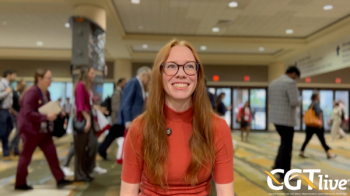
Aligning With Regulatory Expectations as an Important Aspect of Gene Therapy Trial Design
Deborah Phippard, PhD, the chief scientific officer of Precision for Medicine, discussed the unique aspects of clinical trials for gene therapies that need to be considered before initiation.
This is the second part of an interview with Deborah Phippard, PhD. For the first part,
The field of gene therapy is growing, and more companies and institutions, both small and large, are currently shifting from discovery and preclinical research to early and first-in-human clinical trials for their investigational gene therapy products. As gene therapy is still a relatively new therapeutic modality, many clinical trial sponsors are making this transition for the first time.
CGTLive™ recently spoke with Deborah Phippard, PhD, the chief scientific officer of Precision for Medicine, a clinical research services organization, about the most important aspects for organizations to consider when initiating a gene therapy clinical trial. Although the discussion was focused on gene therapy for neurological indications, many of the takeaways, such as the importance of aligning with regulatory bodies on factors like preexisting immunity to adeno-associated virus (AAV) vectors, are broadly applicable.
CGTLive: How can clinical trial designs be optimized to better advance gene therapy development for neurological indications?
Deborah Phippard, PhD: That's a fairly complex thing to think about. If you're going for a single-mutation disorder, I think that clinical trial is a lot easier to design than for something like Alzheimer disease, where you've got a much longer timeframe to see differences. I would suggest something like
If you are considering using, for instance, an AAV vector, there's a lot of a lot of questions around safety of that vector and preexisting immunity. Something I certainly come across a lot with sponsors that Precision is working with is that there's a lot of thought around the actual patient aspect of a clinical study: “How are you going to recruit? How are you going to treat?” There's often a lot less thought around: “What are the regulatory agencies going to require in terms of measuring preexisting immunity during the clinical study, and is that going to be a barrier to recruitment?” It’s going to be less of an issue for things like Parkinson disease and Alzheimer disease, where there are many patients to choose from to recruit into your study, but a lot of the earlier work has been in rare disorders. If you have to exclude patients that have any preexisting immunity that can really cut your patient pool down. From a scientific perspective, [you have to think about] if you are excluding patients for no good reason. There's this whole argument about how much preexisting immunity is bad. One school of thought would say any preexisting immunity is a problem. That's not where I am personally. I certainly think a low level of preexisting immunity to your AAV is probably very acceptable. I don't think it's a significant safety risk and certainly we've got data now that shows those vectors can be efficacious in the presence of some existing immunity. So, why would you artificially cut your patient population down?
What is the downstream effect of that trimming of the trial population? Can that be overcome?
The corollary to that is that you have to have a good robust assay ready to measure that preexisting immunity. Having all these different streams together and thinking about the design of that study, I don't want to forget the manufacturing side of it because if you are building these types of immunogenicity assays, the classic ones being a neutralizing antibody or total antibody assay (generally we're asked to make neutralizing antibody assays). We have to have good manufacturing practice (GMP) or GMP-like reagents. Everybody knows you can't just snap your fingers and have a GMP-grade batch of reporter vector ready. It can take months, if not longer. If you need a very highly regulated assay, you need multiple batches. I can tell you nobody wants to delay a clinical study because an assay is not ready.
Bringing together all those disparate skills and different ways of looking at the problem are absolutely key to me when I think about a gene therapy clinical study because they are complicated. You can't have just one particular skill set, there are so many different things that have to come together. If you're doing an ex vivo gene transfer, you have to harvest cells, you have to get into a lab that can harvest them, expand them, transduce them, and send them back to the clinical site. All those logistics have to happen. We're very lucky now: we've got labs and clinics that have done this, we're really putting those things in place. But to me, it really comes down to planning. It will take a long time to get a study planned and effective. So, it’s complicated, isn’t it?
Transcript edited for clarity.
Newsletter
Stay at the forefront of cutting-edge science with CGT—your direct line to expert insights, breakthrough data, and real-time coverage of the latest advancements in cell and gene therapy.
















































